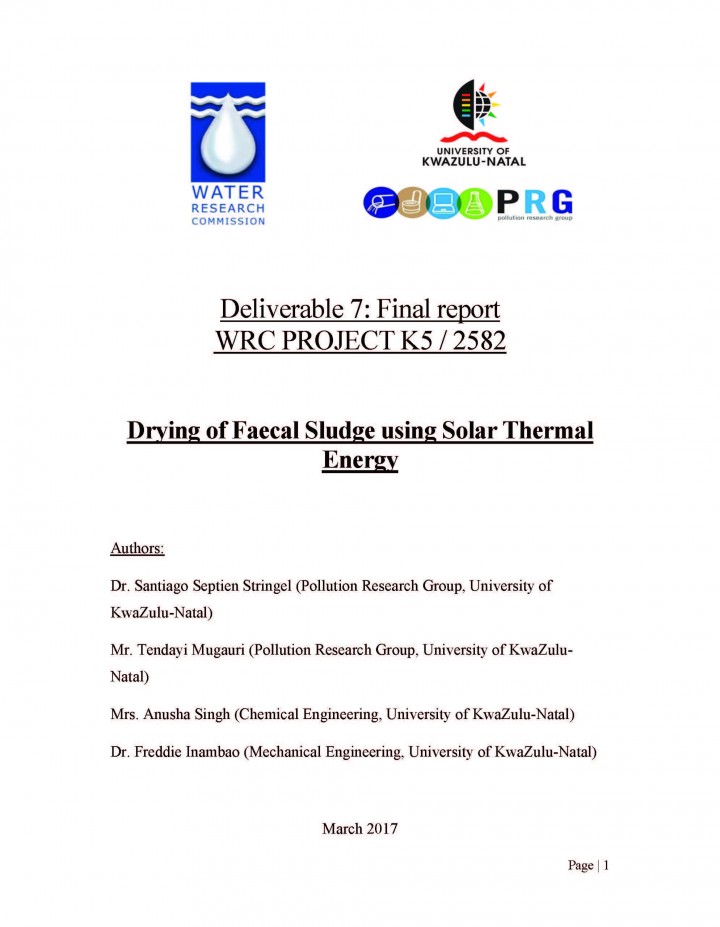Final report WRC Project K5/2582: Drying of Faecal Sludge using Solar Thermal Energy Septien, S., Mugauri, T., Singh, A., Inambao, F. (2019)
Solar thermal energy, an abundant and free source of energy in the world, particularly in a major part of developing countries, could supplement heat for drying purposes, leading to the decrease of the operating costs. In the sanitation sector, the use of solar energy for faecal sludge drying has been minimal, with only a few cases. Possible reasons for the low use of solar drying is the lack of awareness about this type of technology, as well as a lack of knowledge and data for the design of plants that could dissuade sanitation practitioners from using solar drying technologies. Motivated from these gaps, a fundamental study was conducted in this project to characterize faecal sludge solar drying, through funding from the Water Research Commission. The data obtained during the project could be used for the design of solar drying plants, improvement of existing technologies and innovation of further ones. This study was done by the development of a thermobalance to measure the kinetics and calculate the energy balance during solar drying at different conditions. This information is crucial for the design and development of solar dryers. Moreover, a series of analyses were conducted in the dried sample with the objectives to determine how solar drying affects the physical and chemical properties of faecal sludge, with the intention to better understand the phenomenology of the process, and to evaluate the reuse of the product in agriculture and as a biofuel.
Bibliographic information
Septien, S., Mugauri, T., Singh, A., Inambao, F. (2019). Final report WRC Project K5/2582: Drying of Faecal Sludge using Solar Thermal Energy Water Research Comission
Filter / Tags
Faecal sludge treatment processesFundamental research and engineeringPublications by SuSanAFaeces or faecal sludgeEducatorsPoliticians and local decision makersPractitionersGuidelines and manualsEnglish
Downloads
Final report WRC Project K5/2582: Drying of Faecal Sludge using Solar Thermal Energy
Type: application/pdf
Size: 10.19 MB

Published in: 2019
Pages: 154
Publisher:
Water Research Comission
Author(s):
Septien, S., Mugauri, T., Singh, A., Inambao, F.
Uploaded by:
UKZN
University of KwaZulu-Natal
Location of library entry:
